#national museum of the great lakes
Text

A few Fresnel lenses from my visit to the National Museum of the Great Lakes! This one is a fourth-order lens from the lighthouse on Ojibwa Island, Lake Michigan, made in 1891.
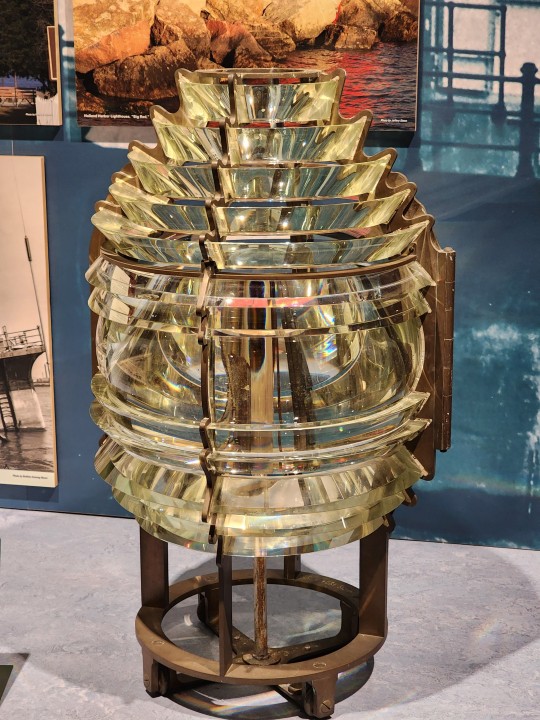
A cute little fifth-order lens, which was used in Sandusky Harbor, Ohio, in 1891.
No first-order Fresnel lenses were used on the Great Lakes, and only five second-order lenses were placed. One of them was in the Spectacle Reef Lighthouse on Lake Huron in 1873, now in the museum:


My photography doesn't give a true sense of scale; that second-order lens is huge.
There is also a model of the lightship Huron, which is now a museum ship you can visit.
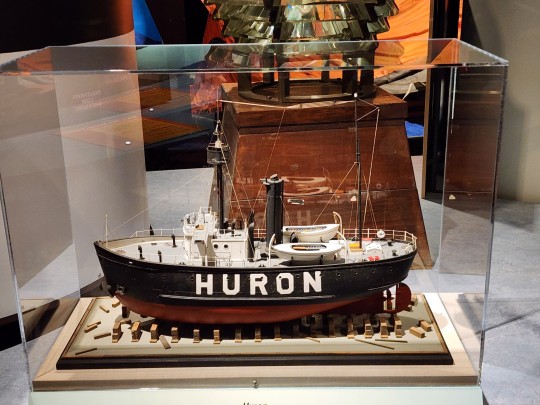
#great lakes#lighthouse#fresnel lens#naval history#age of sail#age of steam#national museum of the great lakes#lightship
437 notes
·
View notes
Note
Help me choose: Meteora/Metsovo/Ioannina or Mycenae/Nafplio/Epidavros? Thank you!
Those are seriously good options! I believe you would love either destination, so I will just give you what each place is ideal for.
Meteora - Metsovo - Ioannina
This is an itinerary that is ideal for nature lovers and people who love urban and provincial areas with strong traditional character in gorgeous natural settings.
Pros:
Meteora is hands down the best natural wonder of Greece.
It is also one of the two most important destinations for Christian Orthodox and post-Byzantine heritage monuments.
Metsovo is a town built in a high altitude, surrounded by beautiful mountains.
It has a strong traditional mountain Vlach Greek character and great cuisine.
Ioannina is the 6th largest city in Greece. It is vibrant, it is a university city, however it retains its own traditional character.
Ioannina is a lake city (which also features a must-visit inhabited lake island) built close to a lot of natural beauty and is the starting point for a lot of nature-oriented destinations, including two national woodland parks.
Ioannina is very significant for Ottoman Greek and Modern Greek history and has a lot of museums and cultural places to visit. Metsovo does too.
Ideal for a lush green spring or a cool summer.
Cons:
No access to the sea.
Farther from Athens than the other itinerary plan.
Probability of adverse weather if visited in cold months.
Tip: For Ancient Greek culture buffs, the archaeological site of Dodona is about 22km from Ioannina.

Mycenae - Nafplio - Epidaurus
This itinerary is ideal for history buffs of all kinds.
Pros:
Mycenae is the best destination for the Mycenaean civilization.
Epidaurus has the best preserved ancient Greek theatre in Modern Greek territory and is in general one of the best destinations regarding Classical Greece. The theatre is functioning. (If you go at the right time during summer, you can watch a theatrical play there as well.)
Nafplio is the first capital of the Modern Greek state, it is coastal and has many points of interest regarding Modern Greek history.
Nafplio is also a good place to explore Venetian / Latin presence in Greece in the late Byzantine and post-Byzantine era.
Nafplio is much smaller than Ioannina but it is one of the prettiest cities in Greece. Both these cities are beautiful though.
Driving distances here are smaller as all destinations are in the same one administrative region (Argolis) and they are closer to Athens.
It might not have the wow factor of the other itinerary nature-wise, but that doesn't mean it does not have beautiful natural surroundings, and coastal ones too.
Ideal for early spring and a mild winter.
Cons:
If history and museum visiting get old for you after a point, the other itinerary might be better.
Pretty hot in summer months.
Touristy.
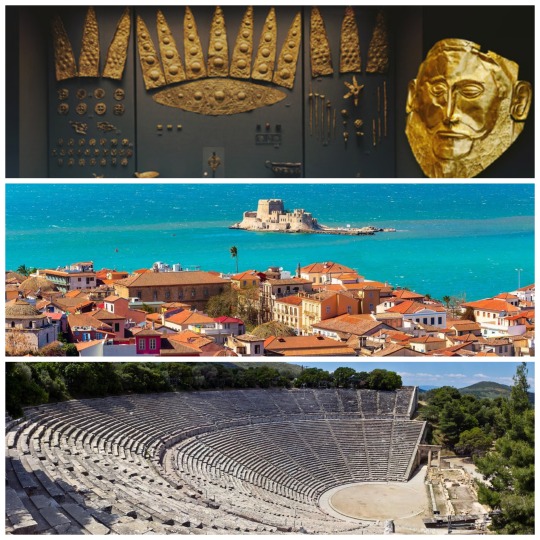
#greece#europe#travel#travel guide#tourist guide#metsovo#ioannina#meteora#epidaurus#nafplion#mycenae#trikala#epirus#thessaly#argolis#argolida#peloponnese#peloponnisos#mainland#greek culture#anon#ask
29 notes
·
View notes
Text







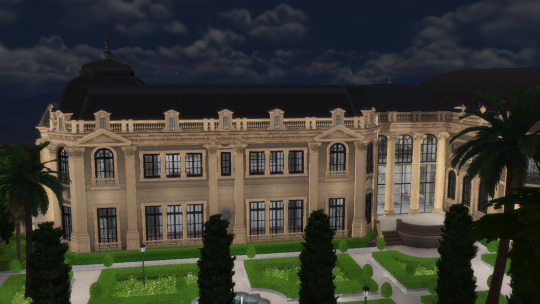

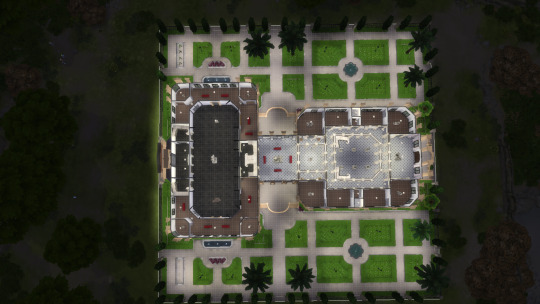
Chile National Museum of Fine Arts
Hello guys!
I leave this here. This is the chilean Museum of Fine Arts.
Some history:
The Palace of the Fine Arts (el Palacio de Bellas Artes), dates to 1910 and commemorates the first centennial of the Independence of Chile. It was designed by the Chilean architect Emile Jéquier in a full-blown Beaux-arts style and is situated in the Parque Forestal of Santiago.
The Palacio de Bellas Artes, the current home of the Museum, is in the Neoclassical Second Empire style and the Baroque Revival style, strongly reinforced with Art Nouveau details and touches of metallic structural architecture. The central entrance is through a gigantically enlarged version of Borromini's false-perspective window reveals from Palazzo Barberini, which encloses a pedimented doorway entirely surrounded by glass, a Beaux-Arts touch. Through a broken pediment the squared cupola rises to the top. The internal layout and the facade are both modelled after the Petit Palais of Paris. The glass cupola that crowns the central hall was designed and manufactured in Belgium and brought to Chile in 1907. The approximate weight of the armour of the museum is 115,000 kg, of the glass of the cupola, 2,400 kg.
Architectonically, the floorplan of the museum is one of a central axis marked by the entrance and a grand hall with a staircase to the second floor. In the grand hall, above a balcony from the second floor, there is a carving in high relief which depicts two angels supporting a shield. They are located in the semi-vault above the heads of two Caryatids that arise from the balcony, carved by Antonio Coll y Pi.
------------------------------------------------------------------------------------------
You will need a 64x64 lot and the usual CC that I use.
I took some liberties because I laked the resources to make it identical to the original.
IMPORTANT - you will need to change the usage because I allready had a family living in the lot and did not want to evict them.
I will be sharing the same building with a parliament configuration and a home configuration, so you can chose the one that fits your game :)
Please let me know if you like it and tag me if you share my buildings in your stories that I really enjoy!
Have a great day!
DOWLOAD: https://www.patreon.com/posts/86664913?pr=true
(early access: 7/28/2023)
#sims 4 architecture#sims 4 build#sims4#sims4palace#sims 4 screenshots#sims4play#sims 4 historical#sims4building#sims4frencharchitecture#sims 4 royalty#ts4 screenshots#ts4 build#ts4cc#ts4 download#ts4#sims 4#the sims 4#ts4 gameplay
54 notes
·
View notes
Text
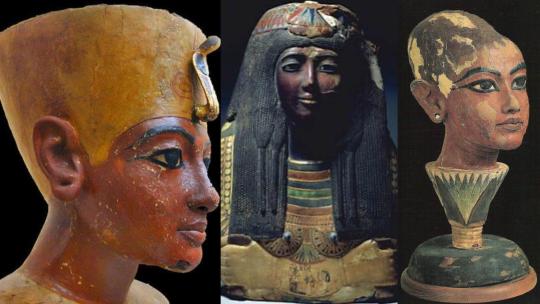
Ancient Black Egyptians? They were African? Were they? This was a topic that was raised and discussed. It is true that other studies have been carried out which suggest the opposite. But the answer is there if you look closely at the enormous array.
Here are the facts that prove ancient Egyptians were Black and Africans.
Ancient Egyptians referred to their homeland as Kmt (conventionally pronounced as Kemet). According to Diop, the Egyptians referred to themselves as “Black” people or kmt, and km was the etymological root of other words, such as Kam or Ham, which refer to Black people.
Senegalese scholar Dr. Cheikh Anta Diop (1923-1986)’s role in life was to challenge Eurocentric and Arab-centric perceptions of pre-colonial African society. He set out to prove definitively that Egypt’s ancient civilization had its origins in Black Africa. At the Museum of Man in Paris, he performed melanin checks on Egyptian mummies and concluded that all the ancient Egyptians were among the Black races.

Egyptian pharaoh Tutankhamen and family analysis by DNATribes recently found that sub-Saharan Africans, especially those from Southern Africa and the Great Lakes region, are the closest living relatives of the mummies, Face2Face Africa documented.
Scouring the past of Egypt and ancient Egyptians, some ancient Greek historians said that the skin of ancient Egyptians was “melanchroes,” that is, black or dark-skinned. The ancient Egyptians were also identified by early Latin eyewitnesses as “black-skinned.”

Scholars Agree
Some of the world’s most esteemed scholars have speculated that Egyptians were Black Africans. Some modern researchers, like W. E. B. Du Bois accepted the theory that Ancient Egyptian society was mostly black Face2Face Africa documented.

In addition to Dr. Diop’s research, in its geographic DNA study, National Geographic recorded that 68 percent of present-day Egyptians are ethnically North African, with foreign invasions having little influence on the genetics of most modern Egyptians.
Some of the most famous ancient Egyptians have been identified as black. For example, Queen Ahmose-Nefertari is most often identified as a woman of color. “According to Sigrid Hodel-Hoenes, the author of “Life and Death in Ancient Egypt,” the Queen’s black skin color is derived from her role, as black is the color of both the fertile earth and the netherworld and death.”

“The term is a collective noun which thus described the whole people of Pharaonic Egypt as a Black person,” according to Diop.
Reading Bones
Most of the skeletons and skulls of ancient Egyptians had characteristics similar to those of modern Black Nubians and other people of the Upper Nile and East Africa, showing they were Black and African, according to study by scientist Diop.
The Blood Group Tell Us
Also, blood type is evidence, according to Diop. He discovered that even after hundreds of years of intermixing with foreign invaders, the blood type of modern Egyptians is the same group B as West Africa populations on the Atlantic seaboard and not the white race’s A2 characteristic prior to any crossbreeding,’ The Atlanta Star reported.
Mother Tongue Evidence
Also, blood group is evidence, according to Diop. He discovered that even after centuries of intermarrying with foreign invaders, the blood type of modern Egyptians is the same group B as West Africa tribes on the Atlantic seaboard and not the white race’s A2 characteristic prior to any crossbreeding.
“The Atlanta Star reported that Diop clearly indicates that ancient Egyptian, modern Egyptian Coptic, and Wolof are related, with the latter two having their origins in the former.
Diop wrote in the “General History of Africa”: “The relationship between ancient Egyptian and African languages is not a fictional fact, but a demonstrable fact that it is impossible to put aside for scholarship.”
22 notes
·
View notes
Text

Mare Island Submarine
Photograph showing the conning tower of a World War II submarine as her periscope appears to cleave the sky above. Over 500 ships were built during the 142 years Mare Island Naval Shipyard served the Nation. Those ships ranged from wooden hulled sidewheeler gunboats to a massive battleship, but it was because of the shipyard’s expertise with the complexities of submarine construction that it became known as a submarine yard in later years. All but one of the Mare Island built ships have fallen victim to scrappers torches or they lie on the ocean bottom, victims of the sea or enemy action. The USS Silversides (SS-236) is the lone surviving ship. She is a museum ship in, of all places, Muskegon Michigan. She is a Gato Class fleet-type submarine built at Mare Island just prior to the outbreak of World War II. She was christened by Mrs. James J. Hogan, wife of Dr. Hogan, Vallejo's civilian representative in Washington, and founder of Council No. l, Navy League, in Vallejo. Dr. Hogan was convinced that Mare Island was Vallejo's lifeblood, and he was one of its most effective champions until his death in 1942. Silversides was launched on August 26, 1941, and she was commissioned one week after the Japanese attack on Pearl Harbor. Silversides departed on her first war patrol on April 30, 1942, for which she was credited with sinking four ships and damaging one. She went on to establish one of the top submarine combat records in the Pacific. Her record reflected more war patrols than all but 5 submarines, while sinking the third greatest number of ships (23), totaling 145,400 tons. During these patrols, the quality of her construction allowed her to escape undamaged following seventeen counterattacks by the Japanese where a total of 163 depth charges were dropped. Following the war, Silversides was towed up the Mississippi River with her superstructure removed to permit passing under bridges. She then became the submarine training ship at Great Lakes Training Station where she continued to serve until 1969. She has been on display at the USS Silversides Submarine Museum in Muskegon, Michigan since 1987.
#mare island#naval history#san francisco bay#us navy#vallejo#Silversides#Submarine#world war 2#world war ii#world war two
7 notes
·
View notes
Text
Certainly! Here's a list of some of the world's best places to visit:
1. **Paris, France**: Known as the City of Love, Paris is famous for iconic landmarks like the Eiffel Tower, Louvre Museum, and Notre-Dame Cathedral.
2. **Rome, Italy**: Home to ancient ruins like the Colosseum and the Roman Forum, as well as Vatican City and St. Peter's Basilica.
3. **Kyoto, Japan**: Rich in history and culture, Kyoto is filled with beautiful temples, traditional tea houses, and stunning gardens.
4. **New York City, USA**: The Big Apple offers a mix of culture, art, food, and entertainment, with attractions like Times Square, Central Park, and the Statue of Liberty.
5. **Machu Picchu, Peru**: This ancient Incan city nestled in the Andes Mountains offers breathtaking views and a glimpse into the region's rich history.
6. **Santorini, Greece**: Famous for its white-washed buildings with blue domes, stunning sunsets, and crystal-clear waters, Santorini is a picturesque island paradise.
7. **Great Barrier Reef, Australia**: One of the world's most spectacular natural wonders, the Great Barrier Reef is a haven for snorkelers and divers.
8. **Serengeti National Park, Tanzania**: Known for its vast plains and diverse wildlife, including the Big Five, the Serengeti offers unforgettable safari experiences.
9. **Marrakech, Morocco**: With its bustling medinas, vibrant souks, and stunning architecture, Marrakech is a feast for the senses.
10. **Iguazu Falls, Argentina/Brazil**: This awe-inspiring natural wonder consists of 275 individual waterfalls and spans the border between Argentina and Brazil.
11. **Dubai, UAE**: A modern marvel with skyscrapers, luxury shopping, and desert adventures, Dubai is a city of contrasts.
12. **Banff National Park, Canada**: Majestic mountain landscapes, turquoise lakes, and abundant wildlife make Banff a must-visit destination for nature lovers.
13. **Bora Bora, French Polynesia**: Famous for its overwater bungalows and pristine beaches, Bora Bora is the ultimate tropical getaway.
14. **Angkor Wat, Cambodia**: The largest religious monument in the world, Angkor Wat is a stunning example of Khmer architecture and a UNESCO World Heritage site.
15. **Rio de Janeiro, Brazil**: Known for its lively carnival, iconic beaches like Copacabana and Ipanema, and the towering Christ the Redeemer statue overlooking the city.
These are just a few of the countless amazing places to visit around the world, each offering its own unique charm and experiences.
#best places to visit#best places to travel#good place#top places#the mandalorian#super mario#across the spiderverse#the owl house#ted lasso#donald trump#yellowjackets#wally darling#rwby#taylor swift
7 notes
·
View notes
Text
Road-trip 2023

So I meant to post about this weeks ago! The last week of June, my brothers and I went on a 4-day road-trip across Oregon, with a quick dip into Northern California. Our three main stops were Crater Lake, the Trees of Mystery in the Redwoods National Forest, and the Evergreen Air and Space Museum in McMinnville, OR. I intended to post pics sooner, but I was too lazy to sit and figure out how to pull the pics from my tablet to my desktop. Pics of Crater Lake below the cut!


We stayed at a nearby campground on the night of the 26th so we could arrive early on Tuesday the 27th.
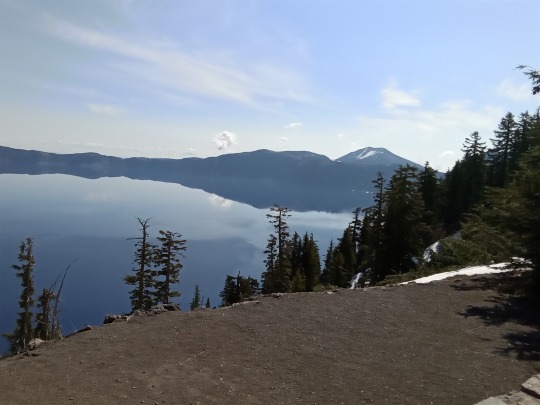

So Crater Lake is like six miles across and over 1,900 feet deep---which is like 600' deeper than the Great Lakes. Our family tried to visit a couple times when we were kids, but it was in the spring when the roads are too snowed in to travel (Mom has pics of us playing in the 8' snow-drifts from when I was about five-years-old). And even at the end of June the hiking trail that goes around the whole lake was still closed off due to the snow.

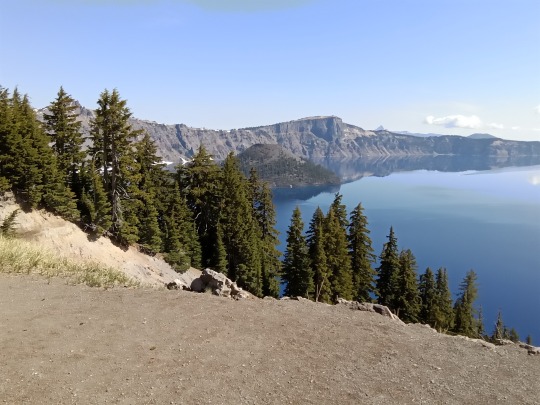
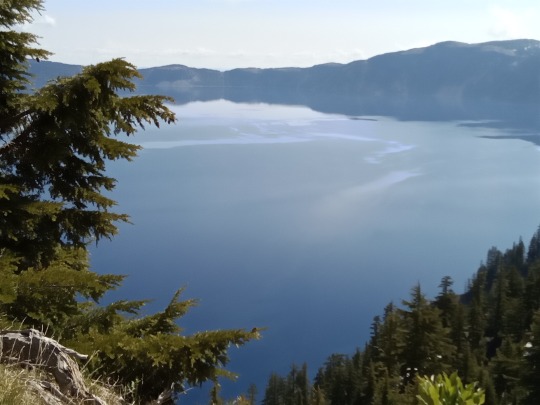

Ooh, even got a rainbow for the end of Pride Month on that last one and didn't even realize it! Anyway, Crater Lake was a cool experience, and I've got several more still on my tablet if anyone wants to look! I'll post a few pics from the Redwoods tomorrow!
21 notes
·
View notes
Text

Restoration of the Smithsonian’s Ilyushin Il-2 Shturmovik
March 27, 2024 Vintage Aviation News Warbird Restorations 0
Ilyushin Il-2 Shturmovik arrived at the Mary Baker Engen Restoration Hangar at the Steven F Udvar-Hazy Center in Chantilly, VA. November 18, 2021. (Smithsonian photo by Mark Avino)
United Fuel Cells
By Adam Estes
In the desperate and cataclysmic struggle that was the Eastern Front of World War II, which the countries of the former Soviet Union still call the Great Patriotic War, the Ilyushin Il-2 Shturmovik (Shturmovik being a general term for attack aircraft in the Soviet Air Forces) was deemed by Stalin to be just as vital to the Red Army as air and bread. Designed by a team led by Sergey Ilyushin in 1938, the prototype for what would become the Il-2, then called the TsKB-57, first flew a year later in 1939 and was just beginning to enter production and operational service when Nazi Germany invaded the Soviet Union on June 22, 1941. As the relatively few Shturmoviks built up to that point where rushed into service, most of the factories tasked with building the Il-2s were forced to hastily relocate east of the Ural Mountains, where unskilled workers struggled to keep up with the production quotas sent from the Kremlin, but as the tide of war turned in the Soviets favor, the Shturmovik, much like the T-34 medium tank, would meet the Germans with numbers and determination. They were flown by crews from across the Soviet Union, who served as pilots and rear gunners, while ground crews worked tirelessly to repair and rearm Shturmoviks returning from the front.

Over 36,000 Il-2s of both single-seater and two-seater varieties were manufactured, making it the single-most produced military aircraft in aviation history. With its armored cockpit and engine compartment and wide array of armaments, from 23mm cannons to unguided rockets and various types of anti-personnel and anti-vehicle bombs, the Il-2s provided close air support for Soviet infantry and armored units, and were a vital part of Soviet military aviation, from the defense of Moscow to the Battle of Berlin. After the collapse of Nazi Germany, many Il-2s were exported to the Soviet Union’s new satellite states, such as Bulgaria, Czechoslovakia, Hungary, Poland, Mongolia, and Yugoslavia (though this latter state would soon become a non-aligned nation during the Cold War). The Il-2, which would be codenamed the “Bark” by NATO, also led to the development of the Il-10 (NATO codename “Beast”), which served not only in the latter stages of World War II but in the Korean War as well. A number of Shturmoviks can be found in museums in Eastern Europe, though three examples have made their way to the United States since the collapse of the Soviet Union in 1991, including a single example currently under restoration at the National Air and Space Museum’s Steven F. Udvar-Hazy Center in Chantilly, Virginia.

The Museum’s Shturmovik at its current location at the Paul E. Garber Preservation, Restoration, and Storage Facility in Suitland, Maryland. Image by Smithsonian’s National Air and Space Museum
The identity of the Shturmovik in the Smithsonian is still surrounded by mystery and ambiguity. It is a composite aircraft made from the remains of three or four Shturmoviks recovered from the bottom of lakes near Leningrad and Murmansk in the early 1990s. With the fall of the Iron Curtain t, it suddenly became easier for Western warbird collectors and restorers to recover wrecks of German and Soviet aircraft from the battlefields of the Great Patriotic War. In addition, it opened once-classified former Soviet archives to Western historians. And while more wrecks would be recovered up to the present day, the current situation with the Russo-Ukrainian War and the subsequent sanctions from NATO countries in response to Russia’s aggression has made it increasingly difficult for old wrecks to leave Russia or for Western scholars to visit those same archives.
However, during the 1990s, a Russian team of restorers would reassemble a Shturmovik in St. Petersburg (formerly Leningrad) out of several recovered wrecks. At the time, the Smithsonian was informed by Russian sources that the basis for their Shturmovik had been one that had been shot down on the Leningrad front on March 15, 1944 while being flown, and was being flown by Lt. Ivan Maksimovih Andreyev and Sgt. Goncharov. Later investigative work has revealed that there was little information to substantiate the story, and with no data plates recovered from the wrecks, the National Air and Space Museum has since retracted their earlier stance. Another complicating factor in terms of the restoration was the way in which the aircraft was assembled in Russia. In the article The Flying Tank, written by James R. Chiles in the June 2022 issue of Air and Space Quarterly, restorer Bill Hadden said, “It appears that they used paint stripper and sand blasting and whatever was needed to remove corrosion and old paint before rebuilding the airplane…. For instance, the serial number was painted on in several places when they were manufactured…. With essentially all the original paint removed, we may never know the identity of our airplane or its particular service history.” Nevertheless, the Russians installed an original, albiet non-operational, Mikulin AM-38 V-12 inline engine, reassembled the landing gear, and refurbished the cockpit. After decades of submersion in the frigid Russian waters, the wooden tail assembly had fallen apart, so a new assembly was built. Following all of this, the reassembled Shturmovik was coated in primer, but the final paint scheme was never completed because a deal had been made for the Smithsonian in a trade agreement.

A view inside the cockpit of the Museum’s Il-2 Shturmovik. Image by Smithsonian’s National Air and Space Museum
In the spring of 1995, the still-unpainted Shturmovik arrived at the Paul E. Garber Preservation, Restoration, and Storage Facility in Suitland, Maryland. At the time it had gone to the Garber Facility, aviation enthusiasts could go on pre-arranged, docent-led public tours of the facility’s numerous warehouses and its restoration shop. But in 2003, with the opening of the Steven F. Udvar-Hazy Center near Dulles International Airport in Chantilly, Virginia, the tours gradually came to an end, and those aircraft that had not gone to Dulles before the opening of the massive new museum would remain at Garber, away from public view.
The beginning of the ongoing renovations to the National Mall location would see some aircraft pulled out of Garber to be eventually displayed either at the National Mall or at the Udvar-Hazy Center, and with a new layout in store for the museum’s World War II in the Air gallery, the Smithsonian’s Shturmovik seemed the perfect fit to bring light to the Soviet perspective of World War II aviation. On November 18, 2021, the Il-2 arrived at the Steven F. Udvar-Hazy Center’s Mary Baker Engen Restoration Hangar, where visitors can view the ongoing restoration projects from a second-story glass mezzanine.
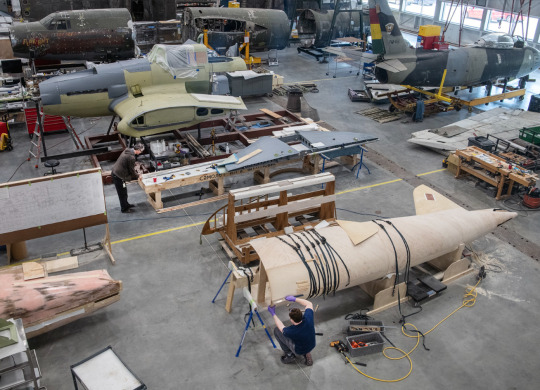
Overhead view of Museum Specialist Jay Flanagan working on the new tail section of the fuselage he is building for the Ilyushin IL-2 Shturmovik in the background, while Museum Specialist Bill Hadden works on the horizontal stabilizer in the background in the Mary Baker Engen Restoration Hangar at the Steven F. Udvar-Hazy Center in Chantilly, VA. Image by Smithsonian’s National Air and Space Museum
After it arrived in the Engen Restoration Hangar, NASM restoration specialists began analyzing the Shturmovik and preparing it for restoration. In this evaluation, the wooden tail reproduced by the Russian team in St. Petersburg was considered to be a poor facsimile with numerous structural problems. Luckily for the Smithsonian, enthusiasts of the Shturmovik were willing to help, providing access to manuals and reference materials, which would provide valuable information once translated into English.

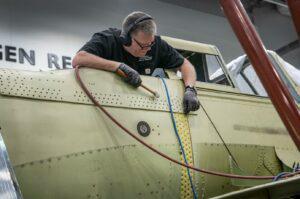
The restoration staff has received further assistance from the Pima Air and Space Museum of Tucson, Arizona, which is home to another Il-2 recovered from the Eastern Front. Pima provided the NASM restoration team with digital copies of their engineering drawings used in their own restoration. These have been especially helpful in the refabrication of the tail action, which differs only from those built in wartime Soviet factories with the use of modern epoxy resin as opposed to water-based wood glues.
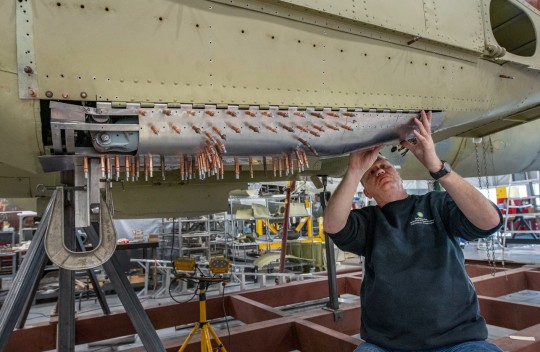
Museum Specialist Tony Hare adjusts the landing gear flaps for the Ilyushin IL-2 Shturmovik in the Mary Baker Engen Restoration Hangar at the Steven F. Udvar-Hazy Center in Chantilly, VA. Image by Smithsonian’s National Air and Space Museum
The restoration has also revealed traces of the original paint on several components, with the standard black, brown/tan, and green scheme on the upper surfaces of the aircraft, and the light blue paint on the underside. The Smithsonian intends to replicate this scheme, which was common on most Shturmoviks of the mid to late-war period. Other discoveries made during the restoration have led NASM officials to conclude that the aircraft was assembled in late 1943 at Zavod No.18 (Factory No.18) at Samara (known during the days of the USSR as Kuybyshev).
When the Shturmovik is complete, it will be placed on public display for the first time at the National Mall location’s upcoming Jay I. Kislak World War II in the Air Gallery alongside several other aircraft, including the Messerschmitt Bf 109G-6 flown by French defector René Darbois (previously covered here: Smithsonian’s Bf 109 Unveils a Hidden Story of Resistance ), the museum’s North American P-51D Mustang and General Motors FM-1 Wildcat.
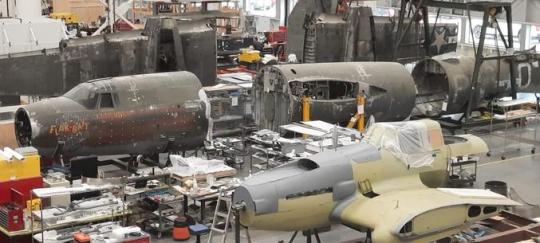

With the IL-2, the Soviet perspective of WWII/Great Patriotic War, made all the more prescient by the current war between Russia and Ukraine being fought on some of the same battlefields in which Soviet aircrews flew their Shturmoviks against the Germans, can be told in ways that the original gallery, opened in 1976, was unable to do. Among the stories of Soviet aircrews that the museum intends to highlight is that of Anna Yegorova, who after flying reconnaissance missions in the Polikarpov U-2/Po-2 biplane, would fly 41 of her 277 combat missions in Shturmoviks until she was shot down in August 1944, and was held as a prisoner in the Küstrin sub-camp of the Sachsenhausen concentration camp, until it was liberatedin January 1945. Like many Soviet POWs, Yegorova was interrogated by the NKVD, and it would be twenty years before she was awarded the Hero of the Soviet Union, the country’s highest military decoration.
Besides the example being restored at the National Air and Space Museum, there are two more Il-2s in the United States. Il-2m3 s/n 305401 has been restored to airworthiness at the Flying Heritage and Combat Armor Museum in Everett, Washington, along with parts of three other Shturmovik wrecks and powered by a Jose Flores-built Allison V-1710 in lieu of the original Mikulin AM-38 V-12 engine. The other is the aforementioned example in the Pima Air and Space Museum in Tucson, Arizona, and is currently on static display in the museum’s Hangar 3.
For more information on the Shturmovik and other projects, visit Homepage | National Air and Space Museum (si.edu).
Special thanks to Dr. Alex Spencer for his contributions to the making of this article.
@Vintageavaitionnews via X
5 notes
·
View notes
Text
My fiance asked me a while ago: "Hey, Arcade, why is Fortification Hill called that?"
I went to Google, naively thinking Google would have an answer for me. It didn't. I told my fiance I couldn't find it, Z complained about that, life went on.
A few weeks later, I'm trying to procrastinate on a GIS project. I think "Hey, maybe if I call Lake Mead National Recreation Area, they'll know something! I think Fortification Hill is in the recreation area." So I call Lake Mead.
"Hello, this is Lake Mead National Recreation Area."
"Why is Fortification Hill called Fortification Hill?"
"What?"
"How did Fortification Hill get its name?"
"I don't know what that is."
"It's by Lake Mead."
"Oh. [Presumably checks what it is] I dunno, prolly because it looks like a fort? I'll go check."
I get put on hold, and then the call hangs up. Great, Lake Mead hung up on me. I think that maybe someone in Mohave County would know, as that is where the hill is located.
I call the Mohave County Historical Preservation Society. They don't understand me at first because I talk too fast, and when they do understand me, they don't know what I'm talking about. They put me through to their research department. The researcher was a wonderful woman who had no idea what I was talking about, and she found it very funny that Lake Mead had just hung up on me.She did get my name, number, and my email address, and she promised to look into it. She told me to "try calling Boulder".
In context, that probably means "go call someone else in Boulder City", so I look up their historical society. I call the number Google gives me. It is the number for the part of the Boulder City government that does building inspections. The building inspectors probably wouldn't know, but I didn't ask them.
Next I try calling the Boulder City/Hoover Dam Museum. They have a research library with books on the Lower Colorado River, which I think includes Lake Mead? They don't pick up, so I leave them a voicemail they will almost assuredly never hear.
I mention all this on a Discord server I'm in, and someone from Kingman, Arizona says they'll go look into it for me. I don't think they'll be able to get me anything but I appreciate the sentiment. I'm not sure where to go from here. I've called four people and not gotten any closer to a straight answer on how this hill got named. If I ever get a restraining order taken out against me by the entire Las Vegas metropolitan area, this will be why. If anyone who sees this has a lead, let me know? Now that the information has eluded my grasp so long, I want it.
9 notes
·
View notes
Text
Hitagi Honeymoon
025
And now for the epilogue, or rather, the punch line.
The day after returning from my trip to Oku-Nikko in Tochigi Prefecture, on which we had used up our extra day visiting the Oya History Museum, I was greeted by none other than Chief Kouga of Naoetsu Station's Hearsay Department, and her boss, the ever-youthful Gaen-san, with whom I had not met in so long that I couldn't recall the last time. They gave me an incredibly intense scolding, one that made me wonder if it was really possible for a person to be scolded so much, let alone a working adult like myself— I would have understood if I were still in high school or even a university student. In all honesty, I felt like crying.
Part of me wanted to retort, to ask what reward this was for having devoted myself to my job in the midst of my honeymoon. But, if their chastisement was meant not for me, but for Shinobu, who is under my care and protection, I had no choice but to willingly accept it.
After all, it is the parent who bears the responsibility for their child.
That night, the shooting star I had witnessed— Oshino Shinobu— had not used her own legendary sword, the "Aberration Killer" derived from Shishirui Seishirou’s “Kokorowatari,” to brilliantly slash through the overcast sky.
As the name suggests, that mythical blade was specialized in slaying aberrations and couldn’t cut through even the frail human skin. Therefore, it was utterly incapable of cutting through clouds, raindrops, or even water vapor— it was beyond dull.
Had the rain we encountered been the trick of a nine-tailed fox, the sword would have displayed its maximum effect, but it was nothing more than an extremely common, natural phenomenon.
So what was the great sword that my shooting star had wielded that night?
It turns out that this was related to the temporary closure of the Treasure Museum at Futarasan Chugu Shrine, located next to Lake Chuzenji. Just before Hitagi had charged up Irohazaka in her minivan, Shinobu had slipped out of my shadow in the midst of the crowds while I was lost in a daydream, or rather meditation, and warped to Chugu shrine. From there, she managed to swipe the sacred blade, Nenekirimaru, that was on display in the Treasure Museum.
Yes, warped.
No, it wasn't vampiric skill, it was the connection between both shrines acting as a navigation— in any case, Shinobu daringly took a shortcut up Irohazaka, and ended up bringing out a national treasure-class Japanese sword, without permission.
With that legendary sword, she dispelled the smoky rainclouds.
All for the purpose of gifting us a starry night sky.
"You know, Koyomin, taking out Nenekirimaru for your own use is a serious crime on its own. But changing the weather? That's a huge deal. Hasn’t Kouga told you that the air is connected all around the world? By clearing the skies above Senjougahara, do you realize how many areas suffered heavy downpours as a result? Everywhere but where you were— Tochigi Prefecture, the Killing Stone— turned into a rainstorm like a fox's wedding. It’s such a disaster that Tamamo-no-Mae's revival is nothing in comparison. Seriously, I wouldn't be surprised if there were landslides all over the place. It's just a coincidence that there wasn't any significant damage.”
I had hoped Gaen-san would praise me when we met again, but to the utmost disappointment— as far as I know, I'm the only one who's ever been scolded so much by this gentle, ageless and wise lady.
"Yes, neither my honor student Kouga, nor Yotsugi, Kaiki, or even Meme, have ever experienced a scolding like this."
"Heh.”
"What are you laughing at, Koyomin? We're not done lecturing you. You seem to be in high spirits. Did something good happen?”
Oh yeah.
Though I only managed to peek through some of what the big-picture-seeing Hawaiian-shirt guy was thinking, it felt like I'd sorta surpassed him─ Of course, after exhibiting its remarkable cutting ability, Nenekirimaru was returned to the treasure museum.
Neither chipped nor dulled, and with a sheen to rival even the stars themselves, it had grown even more radiant.
Well, if that hadn't been the case I would have gotten the chop. Professionally and biologically speaking.
It didn’t turn out that way, and I ended up not having to have visiting hours with the missus at the prison, and this is all thanks to Gaen-san who pulled out all the stops under the sun. I can’t be thankful enough, and I must likewise thank Kanbaru Suruga.
I don't plan on digging deep into how she pulled it off, or who she pulled her strings with, however, Kanbaru had apparently already figured out where Shinobu was before we reached Senjougahara.
She's on par with the CIA.
And sadly, she wasn't in time for the theft of the Nenekirimaru, but at that point in time, Shinobu’s plan was pretty drastic—I won't go into the details, but had it been executed, it wouldn’t have been just the sky that was cut apart; Tochigi Prefecture itself might have been cut clean in two, just like the Utsunomiya Gyoza Statue or the stone. However, before it could be carried out, the missing girl was discovered and, after a big showdown reminiscent of six years ago, the situation was realistically alleviated; this was all Kanbaru Suruga.
It wasn’t that she saw no evil, spoke no evil, and heard no evil.
She saw, spoke, and she made her hear.
I was grateful for that alone, but when Kanbaru, the medical student, got involved in Shinobu's cloudy sky surgery plan, even Gaen-san couldn't bring herself to execute us— Kanbaru's mother was her one and only Achilles heel.
We were protected by our junior’s prestige.
The epitome of a life lived through connections.
"Well, well, Gaen-senpai, that's enough. Despite everything, Assistant Inspector Araragi has done the bare minimum of what he was expected to do,” said Chief Kouga, offering me a follow-up in the end— though it came too late.
"The Killing Stone split as naturally as the weather. If you guys who tore through the cloudy sky say so, it can't be wrong. For now, at least."
“For now? You're leaving room for doubt, Chief Kouga."
"It's a weak doubt though. The Killing Stone might feel lonely if we assert that there's no nine-tailed fox, like Toshogu Shrine would be lonely without Hidari Jingorou. I want to try those Nasu dishes someday too."
With that last remark, Chief Kouga concluded her lecture, in her own peculiar way. Anyhow, that marked the climax of the honeymoon for the Araragi couple.
Ah, well...
No more the Araragi couple— that was in the past.
The beginning of our story was about Senjougahara Hitagi marrying Araragi Koyomi, and thus becoming Araragi Hitagi. In order to mourn the loss of her family name, we decided to go on a honeymoon in Tochigi Prefecture. It was filled with countless twists and turns, but looking back on the trip, there was no question that it was wonderful. However, before long, the very foundation of its meaning was turned upside down.
Despite getting married, Hitagi continued to work at the Japanese branch of her foreign finance firm. Shortly after our honeymoon, she found herself modestly involved in a historic event— or rather, it would be modest to say that she was involved, because in truth she was at the heart of the storm.
It would seem that, while her cell phone had been turned off during our time in Senjougahara, an unimaginable, man-made global economic crisis had struck somewhere on Earth, and her company bore the brunt of it. Being in the thick of it all, there was no way I could stay out of the matter either, and I ended up getting involved as both a husband and an FBI trainee— in the end, we handled it.
It was a hard-won battle with some underhanded tricks thrown in, but we persevered.
As the price for regaining tranquility, however, our little family— Hitagi, me, and our daughter— had to make a major change in our lives for at least a short while. Both the boathouse and the trailer house needed to be given up.
In a word, we were now part of the Witness Protection Program.
We had to change our names entirely and wait patiently for the storm to pass. Hence, we are no longer Araragi Koyomi or Senjougahara Hitagi; not even Araragi Hitagi. Neither Oshino Shinobu nor Araragi Shinobu.
Separate surnames, separate identities.
It must be rare for a family to deal with the delicate issue of shared surnames in such a dynamic fashion, but it was so like us. We had no idea how long we'd have to live like this until the dust settles, but I’m genuinely happy to have shared this unique experience with my dear wife and beloved daughter. Perhaps this is what one should call true family unity. Once again, we find happiness in sharing mercilessly poured misfortunes, and I believe we are the happiest in the world.
It is not the happy end.
Our happiness has only just begun.
Hmm? So, what's the new name for our family, you ask? Come now, it's not raining, so don't go pouring such stand-offish questions. We’ve been together so long, after all, you’re like family to me.
We will disappear for a while.
Once you miss us, you can call out to us however you like.

Author’s Afterword
Translator’s Afterword
16 notes
·
View notes
Text
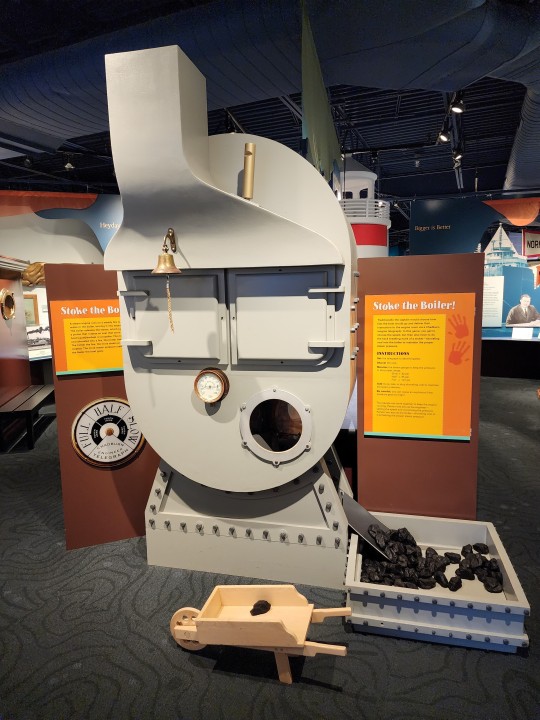
I took a picture of the "Stoke the Boiler!" activity at the National Museum of the Great Lakes especially for @entwinedmoon. Perfect for the budding stoker who wants to learn how to monitor the steam gauge to maintain pressure. Start 'em shoveling young!
#age of steam#stoke the boiler#national museum of the great lakes#the 'coal' is made out of molded foam#naval history
39 notes
·
View notes
Text
hi! is there any attraction/place in Athens that you would highly recommend visiting? Maybe, hidden gems, or underrated places that are awesome? :') i apologize if this is a popular question that you get haha
Hello @dandelionesa ! You would be surprised at how little I know about Athens. I have been few times in my life there, despite being a native Greek living in the country all my life. I mean, I have lived there for a month once but I didn't explore at all beyond the neighborhood. So, I can tell you all the significant places not to miss but I lack the personal insight in little known gems.
Another thing about the blog is that if you visit from the browser, I have an option called "The Regions" which is essentially a travel guide about all main locations in Greece. It is not complete yet but the Athens one is. You can find it in: The Regions > Sterea Hellas > Attica for feature references. But, here, I am gonna screenshot the sightseeing recs mentioned there.
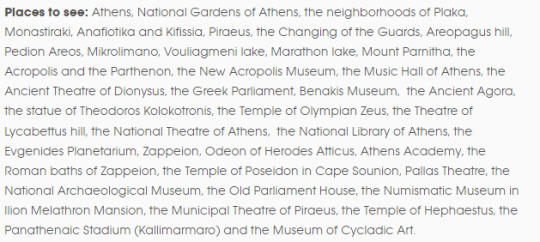
These are about Attica, the region that encompasses Athens. Most attractions are naturally inside Athens but there are some important ones like the Vouliagmeni Lake and the Temple of Poseidon that include driving / travelling outside the city.
The list is concise so I don't explain what each of these places is but they are worth visiting if you have the time. Of course, to do a proper journey of Athens, where Athens is going to be your focus, that takes time. It is a large place. Most people stay in Athens for two days before going to the main part of their vacation, usually some islands. You can't say you did Athens in two days though. Whoever says that to you, don't believe them. You can do Acropolis and like two-three museums at most in this time.
Apart from the ones above I also found some recs from other websites about hidden gems:
Philopappos Hill (that's not a hidden gem, I just forgot it in my own list lol)
Hellenic Motor Museum
Pnyx
Museum of the Basil & Elise Goulandris Foundation
Museum of Greek Folk Musical Instruments
Ilias Lalaounis Jewellery Museum
Benakis Museum of Islamic Art (NOTE: this is a different museum than the main Benakis one which I mention in the list above, if you can do both great, but if you can only do one, then the main must absolutely not be missed)
First Cemetery of Athens (yep, it's a valid rec)
National Observatory of Athens
Watch open air cinema in Thiseion. Or in the rooftop of Cine Paris.
The Greek National Opera (Ethnikí Lyrikí Skiní)
The Nautical Museum on the cruiser Averof
The Benakis (another Benakis) Toy Museum
I don't know what's wrong with me and I forgot to mention above:
Kapnikarea Church
The Metropolitan Cathedral of Athens
The UNESCO Monastery of Daphne
The New National Library (Stavros Niarchos Foundation). The one I mention in the first list is the Old National Library. Both are worth a visit for different reasons.
Go to Glyfada and along the Vouliagmeni coast for swimming (Vouliagmeni is a lake right next to the sea beach)
The Orthodox Church of Saint Dionysius of Areopagus

The Catholic Church of Saint Dionysius of Areopagus!

I was sleeping on the fact that there were two churches of those!
As you see I also added some recs for experiences i.e cinemas, theatres and so on. These are if you take your time in Athens, explore or stay for a while. Note that some might be less available in the summer, for example in summer the National Opera operates in open air performances like in the ancient Odeon of Herodes Atticus. If you stay and explore, check for concerts in theatres and stadiums. Concerts in Greece are real nice and vibey.
In retrospect, thanks for sending this ask because I realised I have a shitload of editing to do in my original list.
EDIT!!! The Byzantine and Christian Museum of Athens!!!! Srsly what's wrong with me lol
EDIT 2!!! Kotsaná Museum of Ancient Greek Technology!!! :@@@
#greece#europe#travel#guide#travel guide#tourist guide#athens#attica#sterea hellas#central greece#mainland#greek facts#dandelionesa#ask
34 notes
·
View notes
Text
In the last week I have done so much:
Wednesday- went to the state capitol to demand a larger arts budget next year
Thursday- gave a fucking killer presentation to recieve a fully funded fellowship to attend a workshop at a fancy craft school (keep me in your thoughts pls!)
Friday- went to a museum and listened to an artist talk about their work and professional life (and sat next to a ceramic fucking legend, like the Michael Jordan of mold making) & taught a class that evening
Saturday- I showed my test piece to the guy whose commissioning three large pieces from me for his lake house and he loved them!! He's so excited!! (Also had a great work day in the studio)
Sunday-attended my really good friend's first solo show!! I'm so proud of her!!! (I kind of took a day off)
Monday- wrote drafts for my letters of intent to apply to local residency programs!! And I wrote a draft for a project proposal to built a 9ft metal sculpture.
Tuesday-fabricated a fish out mild steel. I used a plasma cutter, a mig welder, Beverly shears, jump shears, a spot welder, angle grinder, and the ol' hammer and anvil.
Wenesday- built my first crate to ship artwork!!! And I shipped it to be exhibited at a national ceramic conference!!! It's a huge big fucking deal actually. I also had lunch with the ceramic legend person!! Ahh!!
Thursday- I had a meeting about the metal sculpture with the fabricator! They really like my design!! And they think I can do it!! I also spent time in the print room and did a print run of 24 of a octopus linocut!
3 notes
·
View notes
Text





Today in Great Lakes shipping history. July 4th.
1995-While the United States celebrated its Independence Day, a small fleet gathered 20 miles off of Whitefish Point in Lake Superior as the bell from the wreck of the Edmund Fitzgerald was raised and taken aboard the Purvis Marine Tug ANGLIAN LADY. The bell would later be taken to Michigan State University in Lansing where it would be cleaned with the name EDMUND FITZGERALD applied to the bell once again. The bell was later taken to the museum at Whitefish Point and put on display as a memorial to remember the 29-man crew. The next day, divers placed a new bell inscribed with the names of the 29 men lost in the sinking.
1996- The veteran Buffalo fireboat EDWARD M. COTTER, built in 1900, was designated a National Historic Landmark by the U.S. National Parks Service.
2023- Overnight trips are back on the Badger
LUDINGTON, MI – The crew of the S.S. Badger is bringing back overnight voyages. Lake Michigan Carferry, which owns and operates the 70-year-old vessel on Lake Michigan, announced Monday that its overnight sailings known as doubles will return after a three-year absence on July 6.
The overnight sailings offer passengers a unique opportunity to travel and view the night sky, stars, and sunsets as a part of the route to their destination. The S.S. Badger travels between Ludington and Manitowoc, Wisconsin. It is the last coal-powered passenger steamer operating in the United States.
For tickets and schedule call 800-841-4243.
Boat Nerd
#great lakes#nautical#maritime#ore boat#tug boat#car ferry#ss badger#edmund fitzgerald#boat nerd#shipping#freighter
17 notes
·
View notes
Text
This summer, I traveled to Transylvania, on a Birthright-esque tour for young North Americans of Hungarian heritage. Almost everyone I told about the trip made some sort of Dracula joke. I rolled my eyes, knowing the region was much richer than this. But truth be told, I didn’t have too much yet to counter with.
Here’s the history book version: Transylvania, now part of Romania, belonged to Hungary for more than a thousand years. It’s far larger than I had imagined – at around 100,000 square kilometers, the region is bigger than the whole of present-day Hungary itself, which ceded the region to Romania after WWI. There are currently around one million ethnic Hungarians who still live in Transylvania. The community speaks the language and passionately keeps their customs alive, from music to dance to crafts and, of course, food.
And my version? It was easy to fall in love with Transylvania. From the moment I clambered off the small, tinny plane from Budapest at the small regional airport in Marosvásárhely, I was taken by its beauty. Rows and rows of golden sunflowers, framed by the verdant hills and rugged peaks of the Apuseni Mountains rolled by as we headed for our bed and breakfast. We spent a week learning about the Hungarian community in Romania, hiking, exploring cavernous salt mines and lakes, taking in medieval frescos and wandering cobblestoned streets.
We also ate well — very well.
Growing up, many of our cherished family recipes were very traditionally Hungarian (with a twist, to make them kosher), and the rich goulash, tender chicken paprikash and juicy stuffed cabbage we ate on the trip were familiar. Truth be told, aside from the dizzying assortment of wild blueberry and rosehip jams, I wasn’t really focused on dessert.
That is, until I tried a pastry called somodi kalácsin a tiny village called Torockó. Lightly sweet and yeasted, with a cinnamon swirl, it’s as if cinnamon-raisin bread and babka had a baby. While every meal served by our grandmotherly hosts left us stuffed, I loved the folded bread so much that our guide got the inn to pack us a honey-glazed loaf to go.
Transylvania was home to a sizable Hungarian-Jewish population. In 1910, according to The Museum of the Holocaust in Northern Transylvania, the Jewish population numbered above 64,000. By World War I, Hungary itself had the second largest Jewish population in Europe at almost one million. By this time YIVO’s Encyclopedia of Eastern European Jews notes Jews were “fervently assimilated” to the language and culture (and, rather sadly, looking back now), “passionately identified with Hungarian nationalism.”
Upon my return home to Los Angeles, I made it my mission to find somodi kalács. I knew that Jewish immigrants to the U.S. and Israel popularized other classic pastries from Hungary, such as chimney cakes and monkey bread (aka aranygaluska), and was hopeful I’d succeed.
While I haven’t (yet) found somodi kalácsin my city, I discovered that it’s available at Zingerman’s Bakehouse, the iconic Jewish bakery in Ann Arbor, Michigan.
Like me, the Zingerman team tried somodi kalács for the first time in Torockó. The recipe, they found, dates back 400 years, when the village was a flourishing mining town, whose residents could afford the luxury of cinnamon and sugar. It’s typically served for Christmas, Easter and Pentecost, and until the 20th century, Zingerman’s notes, somodi kalács was the customary wedding cake. Theirs is a pretty traditional version. However, like my own great grandmother would do often, they sub the traditional lard for butter when greasing the pans, explained Managing Partner Amy Emberling.
At Zingerman’s, Emberling told me, it’s a beloved special item that they only bake a couple days each year. “Customers order many loaves of it and stock them in their freezer,” she said. And it’s not uncommon for customers to “let us know that they have not seen this since their childhood days in Hungary.”
It’s also not uncommon to see patrons shed happy tears. I may have felt like shedding a couple happy tears myself when she shared their recipe.
2 notes
·
View notes
Photo









About Timo Hogan from https://japingkaaboriginalart.com/
"Timo Hogan (b 1973, Australian First Nations) came along and impressed us right from the start. He's a fully initiated man. He knows this country inside out. He started painting about his father's country in a way that was slightly more tentative but did reflect Carlene West's depiction of another salt lake country to a certain degree. He brought something else to it again. He brings to the table his own take on it. This painting is not only powerful but also profound. Even the spaces where nothing's happening carry such presence. It's so cohesive. It has a surface tension you wouldn't expect. It's telling a story.
This painting to me is a masterwork. It is an exceptional piece, and it's been a joy watching this artist's career development to the point where he's producing a major painting like this. It is nearly three metres across and would grace any big room or office or foyer, or even a major museum collection. It is a cracker. We weren't surprised when it was bought by someone representing a major collector. The agent agreed with us that this artist is someone with a great future."
Via Spinifex Artists On Our Country
https://japingkaaboriginalart.com/.../we-celebrate-this.../
38 notes
·
View notes